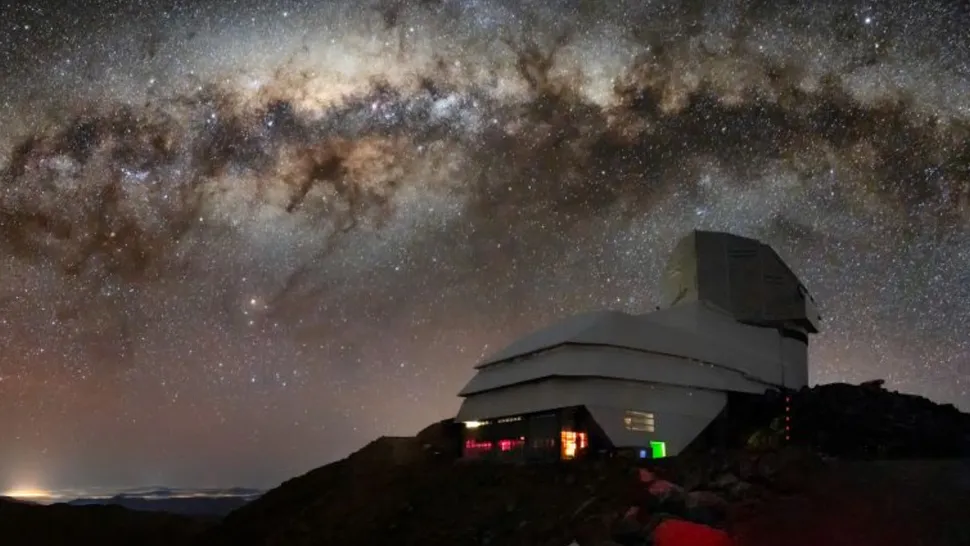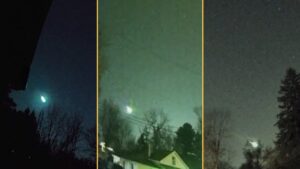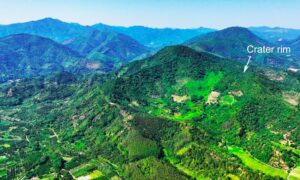In Chile, a monumental telescope has opened its eyes. The telescope at Vera C. Rubin Observatory is the largest digital camera ever built, with a resolution of 3200 megapixels. It will photograph the entire southern sky every three nights.
Today, the team behind this ambitious project released the telescope’s first images of the sky, which astronomers call “first light.”
Over 10 years, the Vera C. Rubin Observatory (VRO) will create a time-lapse movie of the changing universe. Explosions from massive stars in other galaxies, pulsating stars, and asteroids make up most of the VRO’s targets. Objects like these, called transients, change on timescales observable to humans. By contrast, most things in space look the same today as they would a thousand years from now.
Unprecedented scale
The VRO will acquire astronomical data at an unprecedented scale. It will rapidly outpace the combined data of every single other telescope in history, both on Earth and in orbit. As a consequence, it will blow open the door on transient astronomy. Before the VRO, astronomers discovered thousands of supernovae every year. With it, they will discover thousands every night.
But the VRO won’t just focus on the distant universe. The camera also picks up nearby objects like asteroids and comets darting across the field of view. Today, we know of about one million of these rocky bodies in our solar system. The VRO will find five million more, dramatically improving our understanding of the danger Earth faces from medium-sized asteroids.
More than 40 international organizations contributed to the telescope, which sits on the 2,682m summit of Cerro Pachón in Chile. The telescope’s main mirror, which is the size of a small car, journeyed to Chile from the Mirror Lab at the University of Arizona.
At the press conference announcing the first light images, Chilean ambassador Juan Gabriel Valdes discussed the key role Chile plays in astronomy.
“Astronomy is part of our identity and our heritage,” he said, noting that protecting their dark skies is crucial for the world’s space science. “Today, more than 40% of the world’s astronomical observations take place in Chile.”

The primary mirror of the VRO took seven years to build. Photo: UA/VRO/DOE/NSF/LSST
The mother of dark matter
Vera C. Rubin — the woman, not the observatory — made a name for herself in the mid-20th century as a determined scientist in the face of entrenched sexism. Rubin found the first evidence for dark matter when she observed that galaxies rotate faster than their visible matter explains. There must be, she reasoned, additional invisible matter holding them together.
Nowadays, dark matter is a household term, even if no one (including astronomers) knows what it is. But Rubin, like many other female scientists responsible for key discoveries, never received the Nobel Prize.
Although the bread and butter of the VRO is transients, it can also probe how light bends around distant galaxies. The amount it bends depends on how massive galaxies are — another clue to how much dark matter exists in the universe.
Harriet Kung, director of science at the Department of Energy, summarized the questions on dark matter and dark energy that the VRO will help answer.
“How can we better understand the matter and energy that make up 95% of our universe? Why is our universe expanding quickly, and how does that change over time? What role does dark matter play in how our universe evolved?”
First light
“The movie is starting,” announced Kenneth Wright, director of development for the Office of Science and Technology Policy. “The camera is running. And we’re gonna see our universe unfold before us.”
The first image revealed in today’s press conference showed two Milky Way-like spirals whirling against a background of more distant, yellower galaxies. This image comprises only 2% of the telescope’s full field of view.
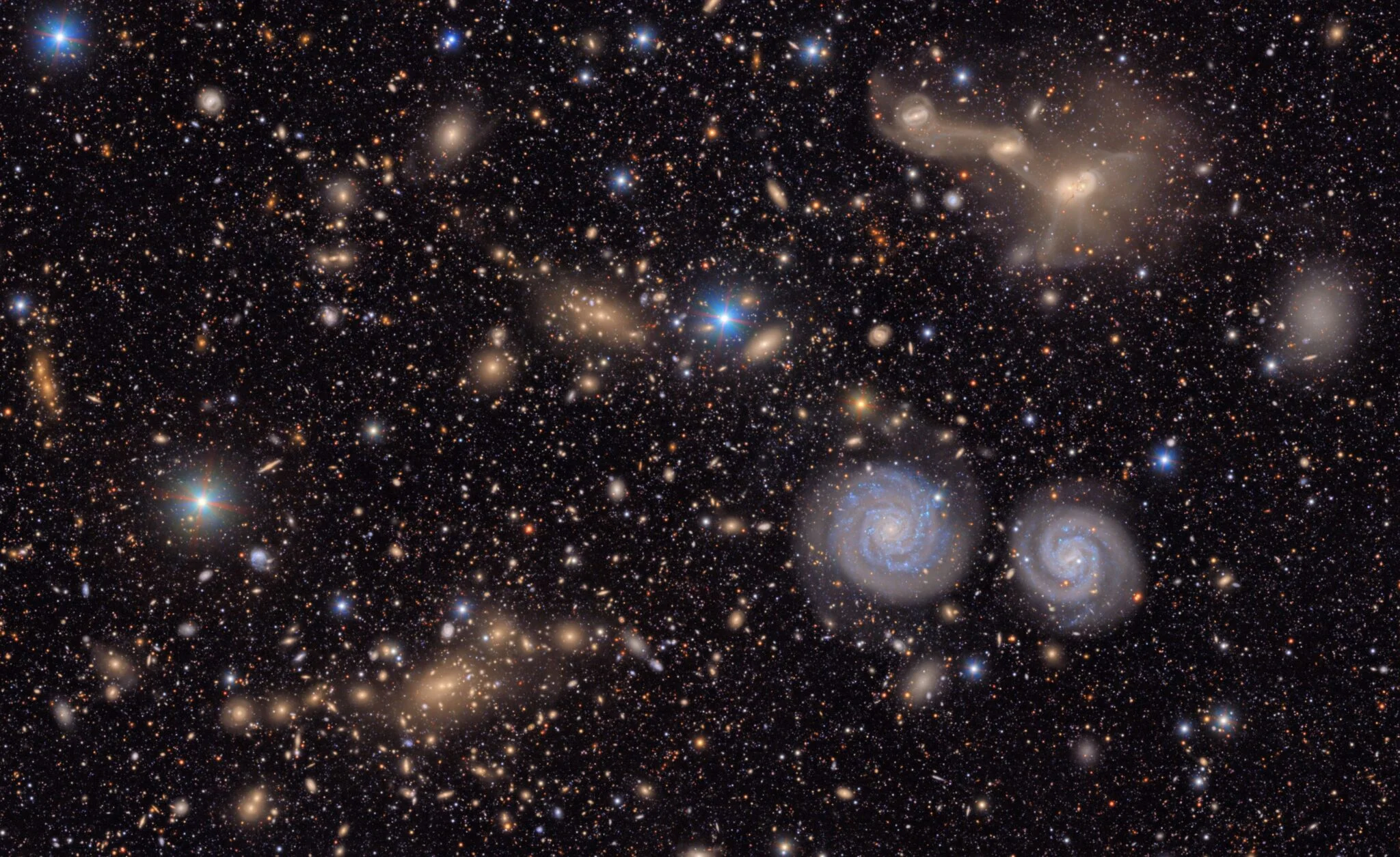
The VRO can photograph a field of view 50 times the size of this one in 30 seconds. Photo: LSST/VRO/NSF/DOE
Since the camera can photograph light from the near-ultraviolet to the near-infrared, the colors in this photograph are more dramatic than what the naked eye would see. Galaxies that look blue emit strongly in the ultraviolet, while reddish-yellow galaxies shine in the infrared.
Red galaxies tend to be older, made up of aging stars that don’t spit out the violet ultraviolet radiation of young blue ones. They also lose their defined spiral arms, as in the large elliptical galaxy in the first light image below. Many of the galaxies here comprise the Virgo Supercluster, a massive family of galaxies about 65 million light years away.
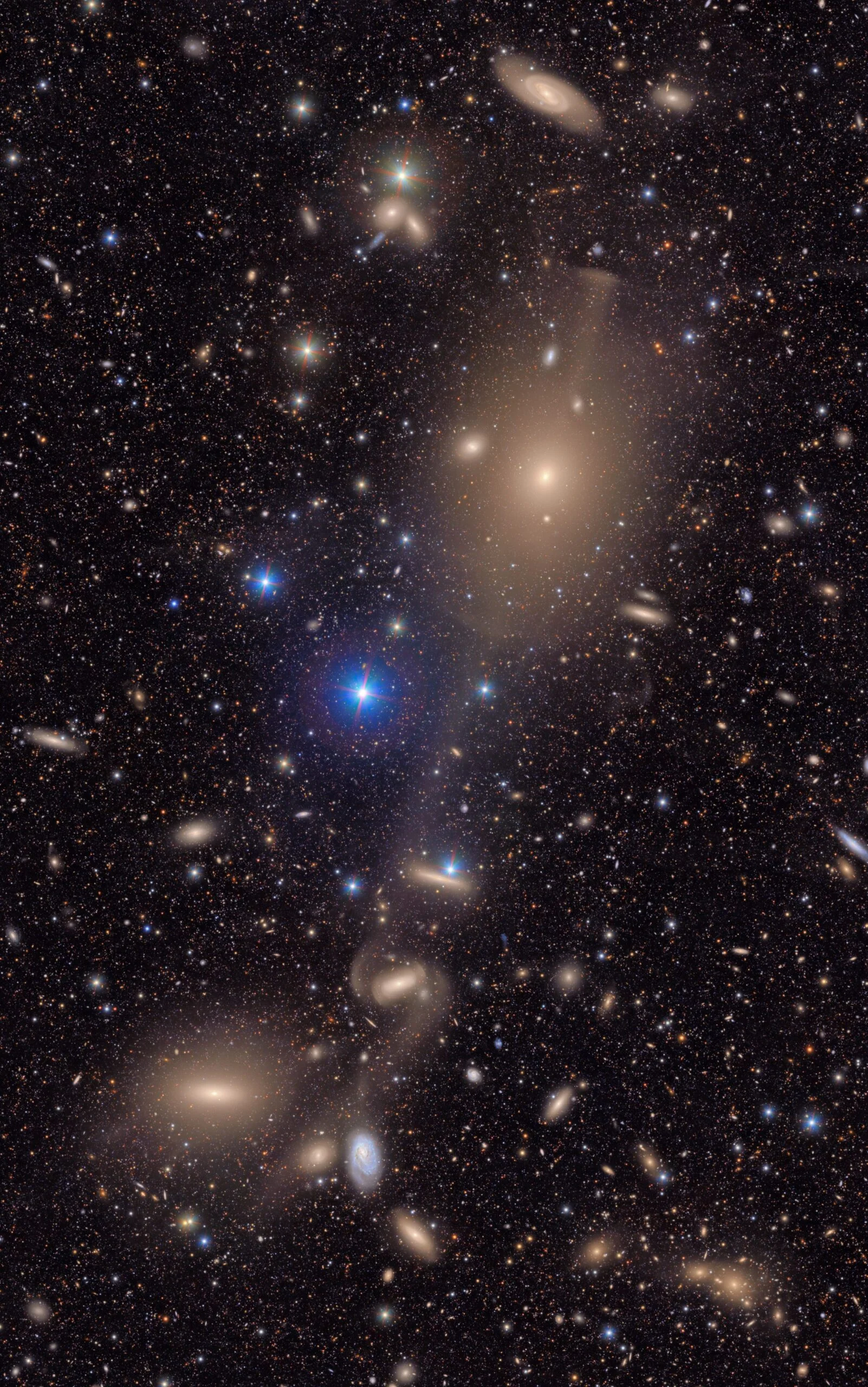
Moving asteroids
In a sneak peek of the VRO’s time-lapse power, the observatory’s director released a video of asteroids moving against the static background of stars. Every asteroid in this video, shown with a turquoise dot, was previously unknown. None of them are on an interception course with Earth.
In just one week, the VRO found 2,100 previously unknown asteroids.
Unparalleled resolution
The final first light image released shows the nearby Trifid and Lagoon Nebulae, yet another strength of this versatile telescope. Dark streaks against clouds of glowing dust and gas show regions of high density where baby stars are forming. Because the telescope was designed to see things very far away, turning it on such close objects allows it to zoom in with the resolution of 400 ultra-high definition TVs stacked next to each other.

These nebulae are where stars form. Photo: NSF/DOE/VRO/LSST
A new view on the universe
Maryam Modjaz, a professor of astronomy at the University of Virginia and a member of the VRO science collaboration, explains that the VRO will transform how she does research.
“I’m particularly interested in very young supernovae, right after the explosion,” she says.
Right now, astronomers have to be lucky to find these objects. More often, they don’t catch them until days after they’ve exploded, missing crucial early information. That won’t be an issue with the VRO, says Modjaz. “We can study the stars that gave rise to those explosions in what I call a ‘stellar forensics’ investigation.”
The VRO is open to more than just astronomers. The observatory has just released its Skyviewer app, where anyone around the world can explore this project, which it calls the Legacy Survey of Space and Time.
In recent years, we have shown many spectacular images from the James Webb Space Telescope. The difference between them is that the JWST looks at very fine detail, while the Vera Rubin Observatory focuses on the big picture. After the VRO finds something new, the JWST can follow up for a more precise study.
